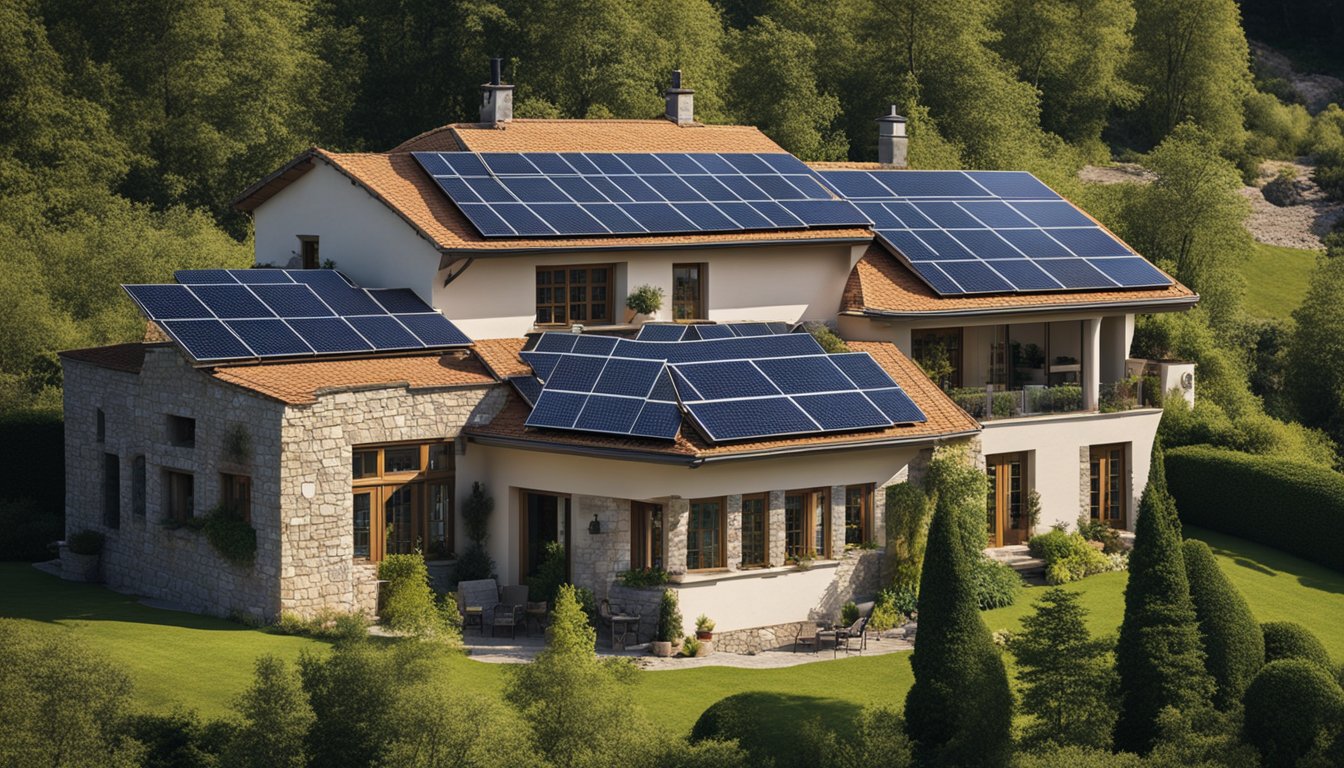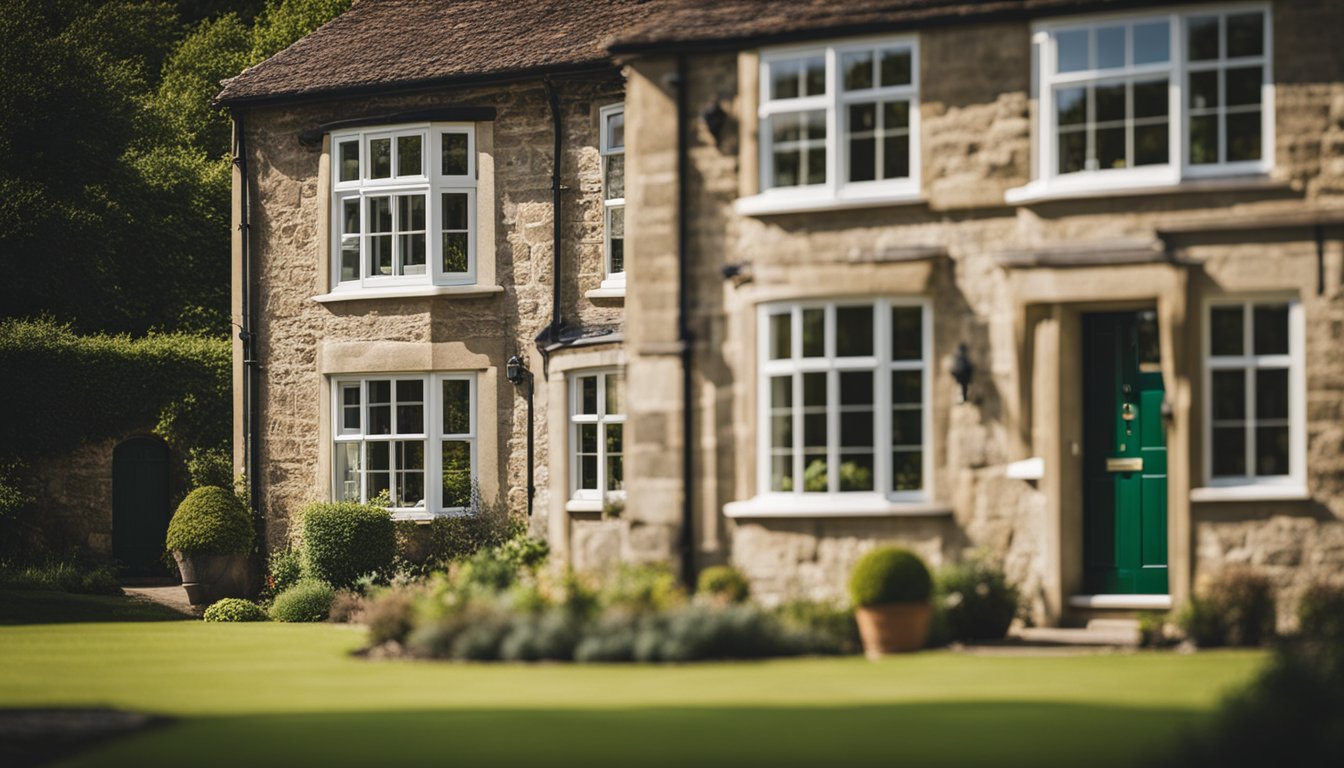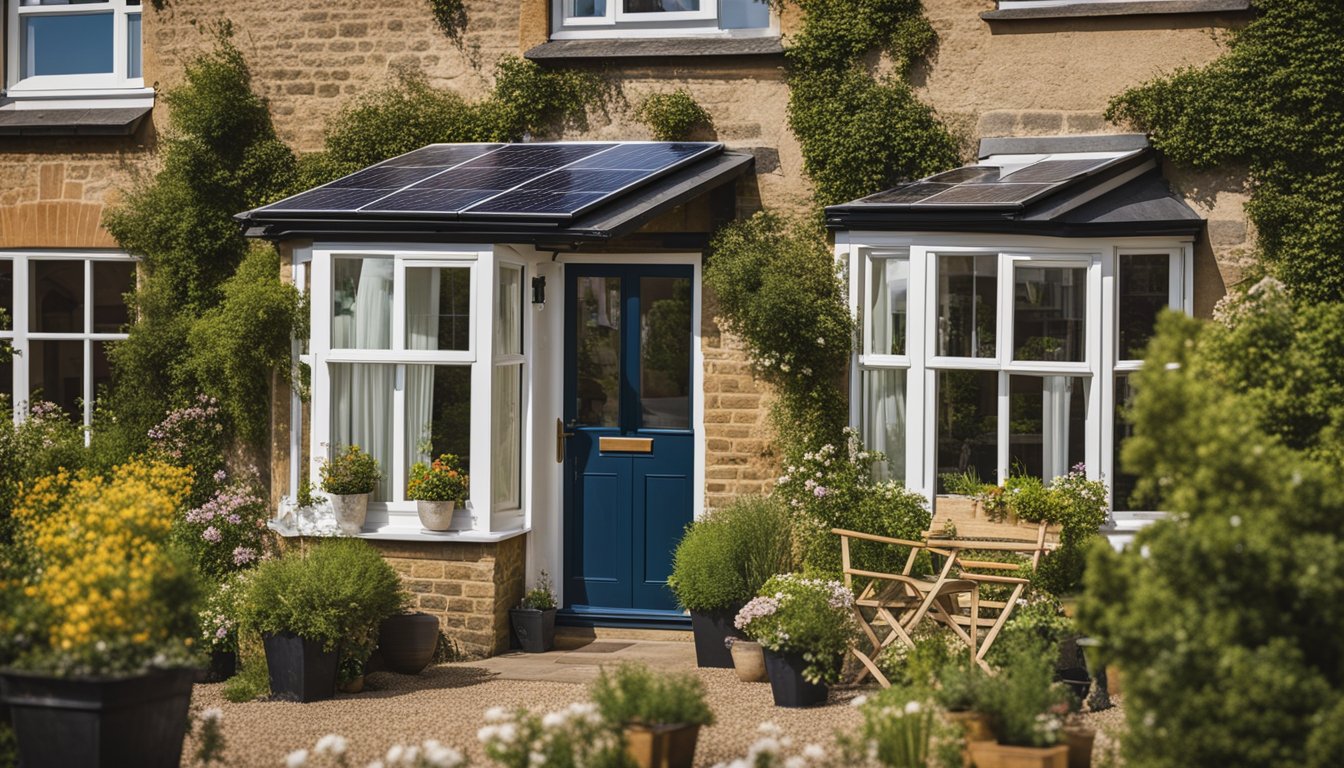Late updated: 04 Feb 2025 13:02
Written by: Eleanor Hartman
How To Improve Energy Efficiency In Historical UK Homes: Practical Solutions for Sustainability
Improving the energy efficiency of historic UK homes presents a unique set of challenges and opportunities. These cherished structures stand as monuments to our rich architectural past and conserving them is important. Enhancing their energy efficiency not only contributes to reducing carbon emissions but also ensures these homes remain viable and comfortable for modern living.

Balancing preservation with modernisation demands a strategic approach. In our exploration, we will discuss practical strategies that respect the historical significance of these buildings while introducing modern efficiency solutions. It's essential to address the barriers such as cost and regulatory concerns, providing viable solutions that protect both the environment and our architectural heritage.
Join us as we delve into this topic, providing insights and solutions tailored for historic UK homes. By integrating sustainable practices, we can play a part in combating climate change while appreciating the legacy of these beautiful homes.
Key Takeaways
- Enhance energy efficiency while preserving historical character.
- Practical strategies address barriers like cost and regulations.
- Sustainable practices aid in combating climate change.
Understanding Historical UK Homes and Energy Efficiency
The improvement of energy efficiency in historical UK homes involves tackling unique challenges due to their architectural and cultural significance. Our approach incorporates understanding these challenges, the significance of these buildings, and navigating legal frameworks.
The Significance of Historic Homes in the UK
Historic homes in the UK represent a rich tapestry of cultural heritage. These structures, often listed or situated in conservation areas, hold architectural and historical value. Preservation of these homes isn't just about maintaining a physical structure but preserving a piece of history that tells stories of past eras. Historic England plays a pivotal role in ensuring these homes retain their significance while adapting to modern needs. Through initiatives and guidance, national planning policies aim to balance heritage conservation with sustainability initiatives.
Challenges in Retrofitting for Energy Efficiency
Retrofitting historic homes poses unique challenges. Traditional construction methods and materials might not easily accommodate modern energy-efficient techniques. Older buildings, particularly those constructed with solid walls, may not lend themselves well to insulation. Meanwhile, improving energy efficiency might require alterations that could affect the building’s original features. Navigating these issues necessitates compliance with regulations from bodies like the Department for Levelling Up, Housing and Communities. Local planning authorities have a consultative role in ensuring retrofits respect both energy targets and conservation requirements.
Preservation and Conservation Principles
We must adhere to established principles when enhancing energy efficiency in listed buildings. Preservation requires maintaining the building's character-defining features. Compatibility between new interventions and original materials is essential. Interventions, such as secondary glazing or sustainable heating systems, must be carefully integrated to protect historical elements. Historic England and similar organisations provide detailed guidelines, emphasising a holistic understanding of each building's context. Innovation should ideally complement conservation, maintaining a balance between energy goals and heritage preservation.
Legal Framework and Planning Barriers
The legal framework in the UK strongly influences how we approach modifications in historic homes. Listed building consent orders and national planning policies regulate changes to ensure compatibility with heritage conservation. Homeowners need to seek planning permission for substantial alterations, which can be a complex process. Interaction with local authorities and departments like the Department for Culture, Media and Sport can be necessary. Planning barriers often include stringent requirements that aim to retain the aesthetic and structural integrity of historic buildings while any modifications are subject to close scrutiny to ensure compliance and preservation.
Strategies for Enhancing Energy Efficiency

Improving energy efficiency in historic UK homes involves various strategies. By focusing on building fabric maintenance, adopting low carbon heating solutions, and leveraging financial incentives, homeowners and building owners can achieve reduced energy costs and lower carbon emissions.
Retrofit Measures and Building Fabric Maintenance
Enhancing the Thermal Performance: Retrofit measures play a pivotal role in enhancing energy efficiency. By upgrading thermal elements like walls, roofs, and floors, we can significantly improve insulation. This not only reduces energy consumption but also contributes to climate change mitigation by lowering carbon emissions.
Repair and Maintenance: Regular maintenance of the building fabric is crucial. Ensuring windows and doors are airtight prevents drafts and heat loss. Occupiers and heritage consultants can collaborate to implement sensitive repair strategies that respect the building's historical significance while ensuring climate resilience.
Embodied Carbon Consideration: When planning retrofits, it’s important to consider the embodied carbon of materials used. Choosing materials with lower embodied carbon can contribute positively to overall sustainability goals.
Low Carbon Heating Solutions
Innovative Heating Systems: Transitioning to low carbon heating solutions, such as heat pumps, offers substantial energy savings. Heat pumps extract heat from outside air or ground and are particularly effective in maintaining indoor air quality while reducing energy bills.
Generating Energy with Technology: Solar panels can be integrated discreetly into historic buildings, providing a sustainable way to generate energy. This not only aids in achieving net zero targets but also offers long-term savings on energy costs.
Overcoming Overheating: Properly designed and installed systems help prevent overheating, ensuring homes remain comfortable throughout the year. By consulting with architects and installers, suitable systems tailored to specific building requirements can be identified.
Financial Incentives and Support
Access to Incentives: Financial incentives are accessible to help offset the cost of energy efficiency interventions. Grants and subsidies are available for retrofits and new heating technologies, significantly reducing upfront costs for homeowners and building owners.
Energy Performance Certificates: Obtaining updated energy performance certificates can highlight areas for improvement and unlock further financial support. These certificates assess energy efficiency and provide a benchmark for planned upgrades.
Advice and Support Networks: Various organisations, like Historic Environment Scotland, offer advice notes and support for implementing these measures sensitively. Collaboration with heritage consultants ensures compliance while maximising the potential for energy savings.
Case Studies and Best Practices
Successful Refurbishments: Examining successful case studies can offer valuable insights. Historically significant homes and buildings have integrated energy saving measures while respecting architectural integrity. Learning from these cases can inform our own projects.
Local and National Best Practices: Adapting practices from both local and national examples can provide proven strategies for tackling energy efficiency. Collaboration with experts in the field can bring fresh perspectives and solutions tailored to individual needs.
Role of Stakeholders: Building owners, architects, and occupiers must work together, leveraging best practices to achieve the desired energy efficiency results. This collective approach ensures sustainability while preserving the character and significance of historic buildings.
Frequently Asked Questions

Improving energy efficiency in historic UK homes requires a blend of smart technologies and sensitive techniques that respect the architectural integrity. Understanding best practices, sustainable solutions, and financial incentives can help homeowners achieve modern energy standards without compromising historical significance.
What are the best practices for retrofitting historic UK homes to enhance energy efficiency?
Retrofitting historic homes should balance improvement with preservation. Methods include upgrading thermal performance, sensitively installing insulation, and using energy-efficient systems that blend with the building's character. The focus is on reducing energy consumption while maintaining architectural integrity.
Which sustainable technologies can be integrated into traditional UK homes without compromising their historical character?
Solar panels and biomass boilers can be adapted to suit period properties. In some cases, renewable energy technologies like ground source heat pumps are installed with minimal visual impact. Selecting technologies that require the least alterations helps preserve historical aesthetics while boosting energy efficiency.
How does insulation improve energy efficiency in historic UK homes, and which materials are suitable?
Installing insulation reduces heat loss and enhances a home's comfort. Materials such as wood fibre and breathable plasters help maintain the building's health. For minimal impact, original features should be preserved, and insulation materials should be chosen based on their compatibility with the existing structure.
Can you detail the 'whole house approach' to improving energy efficiency in historic England homes?
The 'whole house approach' considers every aspect of the building as interconnected parts. By assessing the entire property, from heating and ventilation to windows and doors, improvements can be made holistically. This ensures each enhancement complements the others, resulting in optimal energy performance.
What grants or incentives are available for owners of historic UK homes to improve energy efficiency?
Owners of historic homes can benefit from various grants and incentives aimed at improving energy efficiency. The UK government offers schemes such as the Green Homes Grant, which provides financial support for energy-saving renovations. These initiatives facilitate improvements that maintain the historic value of properties.
In what ways can historic UK homes be updated to meet modern energy regulations without extensive alterations?
Utilising reversible and non-invasive methods is key. Energy-efficient measures like secondary glazing, draft-proofing, and energy-efficient lighting can help meet regulations. By choosing interventions that are minimally intrusive, homeowners can enhance energy efficiency while preserving the home's original charm.